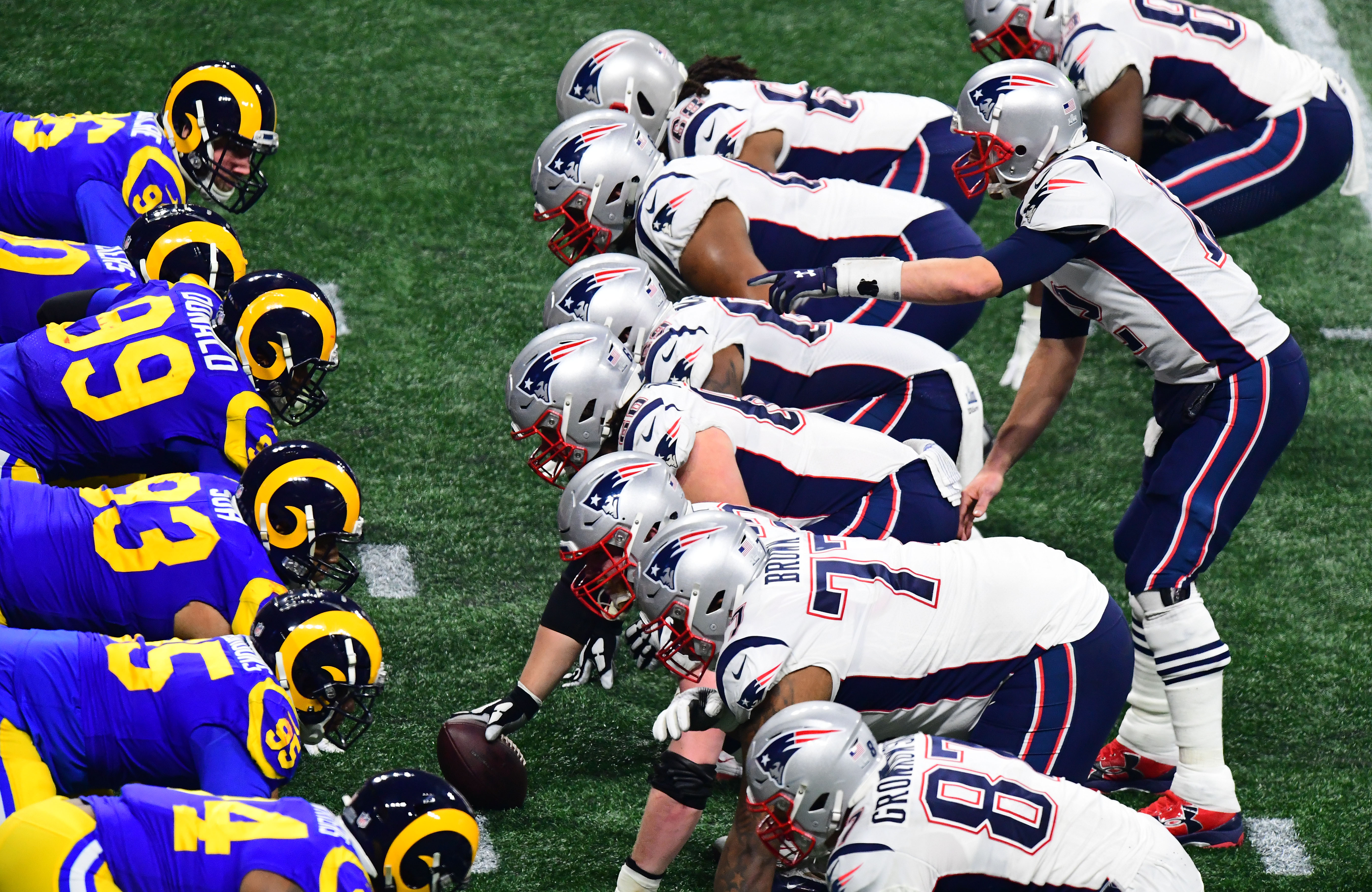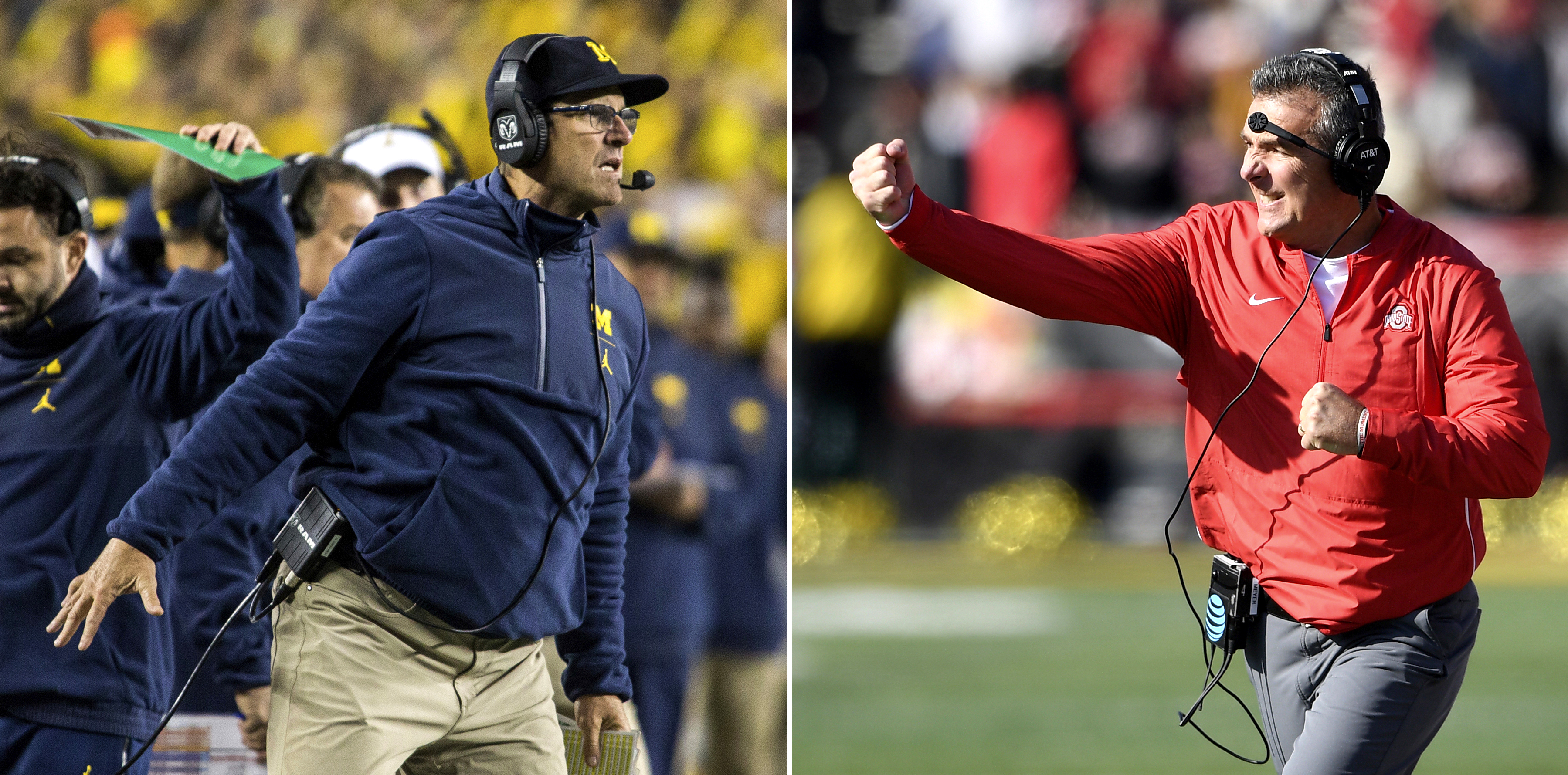The NFL's Chicken Little moment
Don't buy into the NFL's ratings panic


If you ranked the NFL's major storylines this season, the league's shrinking television audience would come behind only national anthem protests and the employment status of Colin Kaepernick.
For years, fans have been gradually turning away from the gridiron. The turning point came during the 2014 offseason, when the NFL spawned a series of horrific storylines, including the growing CTE crisis and repeated mishandling of players' off-field domestic violence cases. Kaepernick's 2016 decision to kneel during the national anthem set off a cultural backlash that has made the NFL one of the most divisive brands in the country, and continues to reverberate as other players continue the practice even though Kaepernick himself is no longer on an NFL roster. Overall, the average NFL game lost over 1.7 million total viewers this season compared to last year — and a whopping 3.2 million viewers since 2016.
The Great Audience Panic of 2017 may send NFL diehards into a tailspin. But it's actually just the latest in a cycle of viewership that has plagued all four of the U.S.'s major sports leagues. Since the fall of 2001 (the earliest period for which there is comprehensive Nielsen data), the NHL, MLB, and NBA have each gone through their own tales of woe — and have largely come out better on the other side.
The Week
Escape your echo chamber. Get the facts behind the news, plus analysis from multiple perspectives.

Sign up for The Week's Free Newsletters
From our morning news briefing to a weekly Good News Newsletter, get the best of The Week delivered directly to your inbox.
From our morning news briefing to a weekly Good News Newsletter, get the best of The Week delivered directly to your inbox.
Let's start with hockey. The NHL has always had the smallest footprint of the four major leagues, in no small part thanks to the perception of hockey as a cold-weather sport for cold-weather cities. Making matters worse is the NHL's history of self-inflicted labor stoppages. Nothing turned people away from hockey more than the 2004-05 lockout, which wiped out an entire season.
Soured on the league's slumping viewership, ESPN decided in 2005 not to renew its broadcasting deal with the NHL. NBC picked up a sliver of the league's national broadcasts, while Comcast acquired the cable rights for its lower-profile channel Outdoor Life Network, which it rebranded as Versus in 2006.
But even when the players returned to the rinks, viewers didn't come back to their TVs. Viewership for the 2005-06 regular season plummeted 36 percent from the 2003-04 season, the last before the stoppage. This chart shows the steep drop-off, with statistically significant growth highlighted in green and statistically significant declines shaded red.

The problem was that Versus was reaching far fewer homes than any of the ESPN networks, which handicapped the league's efforts to recaptivate viewers post-lockout. But after successfully negotiating to be included in basic cable packages, Versus — which was rebranded as NBC Sports Network in 2012 — expanded its reach, beaming into more households.
A free daily email with the biggest news stories of the day – and the best features from TheWeek.com
In the 2005-06 season, Comcast's first broadcasting the NHL, regular season viewership was just 285,000 people per game on average. By 2008-09, viewership had climbed for three consecutive seasons. By 2012-13, the channel's first season as NBC Sports Network, the NHL saw its highest recorded viewership during the regular season, conference finals, and Stanley Cup finals.
Of the seven full regular seasons that have been played since the turn of the decade, five have exceeded the viewership from the pre-lockout 2003-04 season. The NHL's audience still ebbs and flows, but Comcast's willingness to build essentially an entirely new sports channel around hockey's rising talents helped the league recover after the turbulent days of the early 2000s.
Over on the diamond, Major League Baseball's national viewership troubles began as the "Steroid Era" reached its peak — or perhaps more accurately, its nadir — in the late 2000s, after superstars like Manny Ramirez and Sammy Sosa were implicated in the scandal. Many baseball fans were disgusted.
Regular-season viewership cratered in 2010, when the average telecast audience dropped by 38 percent. And unlike with the NHL, MLB's broadcasting partners weren't much help: Fox shuffled broadcasts to its struggling cable sports channels like Fox Sports 1 and Fox Sports 2, while ESPN's broadcasts were enveloped by coverage of more PED scandals.

After the dramatic single-season drop-off of the 2010 season, MLB continued to shed viewers, slipping to just 380,000 per game on average in 2014. What turned things around for MLB was the resurgence of its most historically significant teams. Fans tuned back into baseball to see legendary franchises reborn: The Chicago Cubs' sudden contention, along with the prominence of the Cleveland Indians, Los Angeles Dodgers, New York Yankees, and Houston Astros, gave baseball a much-needed lift out of the depths.
The 2015 season saw gains across the board, averaging 440,000 regular-season viewers per game as the Yankees, Cubs, Dodgers, and Astros all surged into the playoffs. The 2016 regular season maintained viewership of 400,000 per game, while World Series viewership that year jumped 57 percent thanks to the Cubs' triumph — a bump not seen since the Boston Red Sox broke their own "curse" in 2004. In 2017, regular-season viewership dipped, but playoff audiences stayed strong as the Indians, Dodgers, Yankees, Astros, and Cubs all faced off in divisional series games.
The closest comparison to the NFL's current malaise, however, is the NBA. Despite lockouts in 1998 and 2011, no single issue stuck to the NBA like criticism of its culture; detractors specifically targeted its relationship with rap and hip-hop in the 1990s. With a few players running afoul of the law, the go-to description of the NBA was that it was a league "full of thugs" — a descriptor dripping with racial implications. That perception, along with heavy black viewership, arguably played a role in NBC's decision to not re-up its rights deal with the NBA in 2002.
The league's broadcasting rights were scooped up by ABC and ESPN, while TNT retained its status as a rights-holder since 1989. But the NBA's first season away from NBC saw a plunge in viewership, with a 27 percent dive in regular-season audience and a whopping 37 percent drop during the NBA Finals.

The racial stereotyping of the NBA as "full of thugs" is not unlike the NFL's current public perception problem. What boosted the NBA's cultural cachet was its stars. The greatest example is Michael Jordan; the Hall of Famer had no equal in terms of on-court success or off-court marketability, perhaps most evidenced by his legendary turn facing off against cartoon aliens in the Warner Bros. movie Space Jam.
Most recently, the league no doubt owes great thanks to LeBron James, who has remade the Jordan template in his own image, becoming a leading voice on social issues, which Jordan always steered clear of, while dominating on the court en route to seven straight Finals appearances. James as a single-handed audience driver cannot be overstated: Since entering the league in 2003, James has played in 45 Finals games, which have attracted 17.14 million TV viewers on average — including 10 games that garnered more than 20 million viewers. By contrast, the 42 Finals games in that time period without James averaged just 15.14 million viewers per game.
Like MLB, the NBA has also benefited from some historically compelling matchups. In the 2008 NBA Finals, a revival of the legendary rivalry between the Boston Celtics and Los Angeles Lakers prompted a huge 60 percent spike in viewership for the series. When the two old foes faced off again in the 2010 Finals, the rematch spurred a 27 percent jump in Finals viewership over the previous year, when the Lakers faced off against the Orlando Magic.
The NFL is fundamentally different from its peer leagues, with its far-shorter regular season, single-elimination playoffs, and culturally ubiquitous championship game. It's fair to think that its season-long tailspin could continue into this weekend's Super Bowl and beyond; it's a matchup between the nationally loathed New England Patriots and the less-despised-but-still-not-great Philadelphia Eagles, after all. Playoff viewership is down this year — including several games recording multi-year lows. It's likely not a question of if ratings drop for the Super Bowl, but rather how much they will fall.
But the bigger picture reveals that the NFL can learn from the challenges each of the other leagues faced. Viewership was affected by labor crises (NHL), offensive power outages (MLB), and negative public perception (NBA) — and all lived to tell the tale. The NFL doesn't have any pressing labor concerns, with a collective bargaining agreement that doesn't expire until 2021. A pass-happy league continues to rewrite the record books. And whether or not Tom Brady actually plays into his mid-40s, the NFL has several young rising stars, like Houston's Deshaun Watson, Los Angeles' Todd Gurley, and New York's Odell Beckham Jr., who are enormously talented and also can bring a likable charisma to the field.
It's true that the league's deeper problems — player health, politics, and treatment of women all come to mind — won't go away. But we've seen this ratings game before. As history has proven, the NFL just has to ride out the choppy waters before it finds smooth sailing once again.
Jason Clinkscales is the managing editor of The Sports Fan Journal as well as an editor at Yardbarker. He spent several years as a sports reporter for the New York Beacon, an African-American focused weekly newspaper. A former research analyst in advertising and television, his media analysis work has been featured in Awful Announcing and Decider.
-
 5 sleeper hit cartoons about Sleepy Don
5 sleeper hit cartoons about Sleepy DonCartoon Artists take on cabinet meetings, a sleepy agenda, and more
-
 Political cartoons for December 6
Political cartoons for December 6Cartoons Saturday’s political cartoons include a pardon for Hernandez, word of the year, and more
-
 Pakistan: Trump’s ‘favourite field marshal’ takes charge
Pakistan: Trump’s ‘favourite field marshal’ takes chargeIn the Spotlight Asim Munir’s control over all three branches of Pakistan’s military gives him ‘sweeping powers’ – and almost unlimited freedom to use them
-
 The hottest Super Bowl ad trend? Not running an ad.
The hottest Super Bowl ad trend? Not running an ad.The Explainer The big game will showcase a variety of savvy — or cynical? — pandemic PR strategies
-
 Tom Brady bet on himself. So did Bill Belichick.
Tom Brady bet on himself. So did Bill Belichick.The Explainer How to make sense of the Boston massacre
-
 The 13 most exciting moments of Super Bowl LIII
The 13 most exciting moments of Super Bowl LIIIThe Explainer Most boring Super Bowl ... ever?
-
 The enduring appeal of Michigan vs. Ohio State
The enduring appeal of Michigan vs. Ohio StateThe Explainer I and millions of other people in these two cold post-industrial states would not miss The Game for anything this side of heaven
-
 When sports teams fleece taxpayers
When sports teams fleece taxpayersThe Explainer Do taxpayers benefit from spending billions to subsidize sports stadiums? The data suggests otherwise.
-
 The 2018 World Series is bad for baseball
The 2018 World Series is bad for baseballThe Explainer Boston and L.A.? This stinks.
-
 This World Series is all about the managers
This World Series is all about the managersThe Explainer Baseball's top minds face off
-
 Behold, the Bud Selig experience
Behold, the Bud Selig experienceThe Explainer I visited "The Selig Experience" and all I got was this stupid 3D Bud Selig hologram
